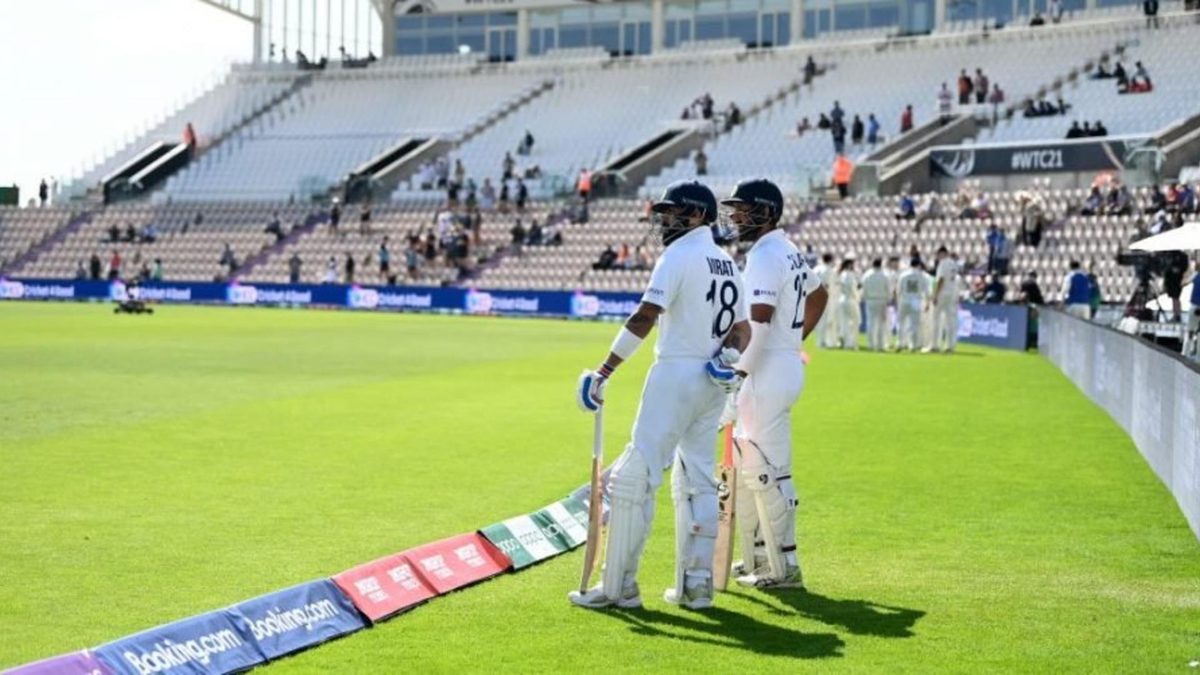
After the openers gave India a solid start on day one, a flailing middle order failed to pile on the platform and it’s become a trend now for India.
Sign up to The Cricket Draft, powered by Wisden, an all-new, free-to-play fantasy game running alongside The Hundred, to win prizes and compete with your friends.
Put it down to tough pitches, or maybe hard luck, or three batters going through rough patches at the same time, anything really; India’s middle-order slump is real, and it’s hurting them.
After a combined tally of just nine runs in the first innings of the Trent Bridge Test, India’s No.3 to No.5 had a reasonably decent contribution of 42 from skipper Virat Kohli at Lord’s in the first innings, but it still wasn’t enough to drive home the advantage that Rohit Sharma and KL Rahul had given them with a century stand.
Low returns from India’s experienced trio of Cheteshwar Pujara, Kohli and Ajinkya Rahane has been a feature in India’s Test matches since the start of 2020. In this time period, Pujara, Kohli and Rahane average 25.09, 24.18 and 25.76 respectively.
India’s win against Australia in Australia, the convincing series win England at home and the near-win at Trent Bridge in the first Test all came with three key batting positions (No.3-No.5) contributing much less than expected (yes, we remember the Rahane hundred).
Still, these are experienced players, some say, and a momentary blip doesn’t mean much in the long run. But before we dismiss the poor returns as an aberration, it’s good to know just how bad the slump is. Since the start of 2020, India’s No.3-No.5 have contributed runs at an average of 27.44, the worst for any Test team after West Indies in this time frame. A lack of match-defining hundreds has been a feature from India’s middle order in this time. The three key positions have 12 scores of fifty or more in this time frame, but only one of them was converted into a hundred.
There’s been little attempt to force their way out of the rut with positive batting either. No.3-No.5 has a combined batting strike-rate of 38.99 in this period when no other team has registered lower than 44.
India’s middle-order batsmen have gone through similar rough patches in the past, but most have come in the previous century. In the 21st century, 2020 and 2021 have seen the worst batting averages for India’s No.3-No.5 in Test cricket: 26.09 and 28.17 respectively.
Even considering how bowlers in general have thrived in the last few years, that’s a serious dip. 2019, for instance, was among the top 10 years in terms of batting averages for the three batting positions for India.
The most serious concern among the three senior batters is Pujara, whose dry spell goes 10 innings back when he last made a 25-plus score. 2020 and 2021 have also seen the worst returns from India’s No.3 in Test cricket this century. Pujara is the only player India have tried in the position (aside from an odd promotion to No.3 for Jasprit Bumrah as nightwatchman) in these two years.
Even as India’s openers and lower middle-order script their own fabulous tales, the extended run of poor form from three of India’s most experienced Test batsmen is cause for serious concern.








